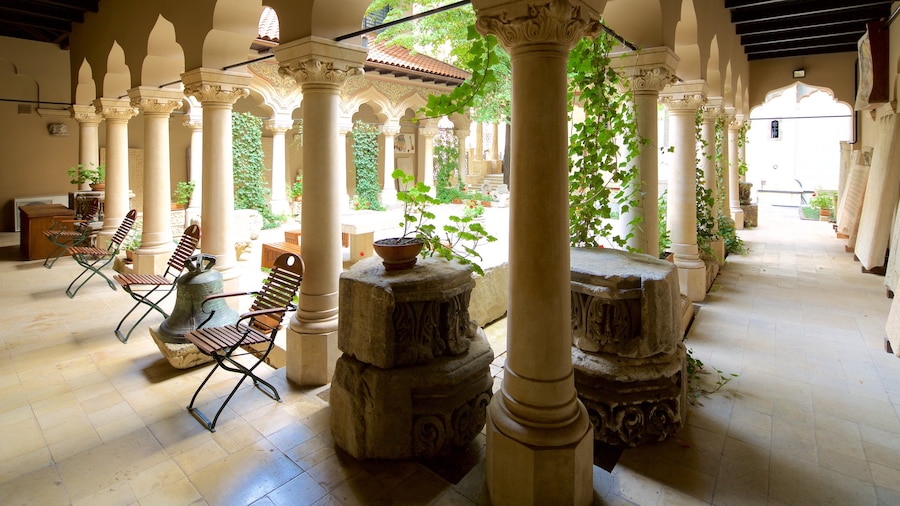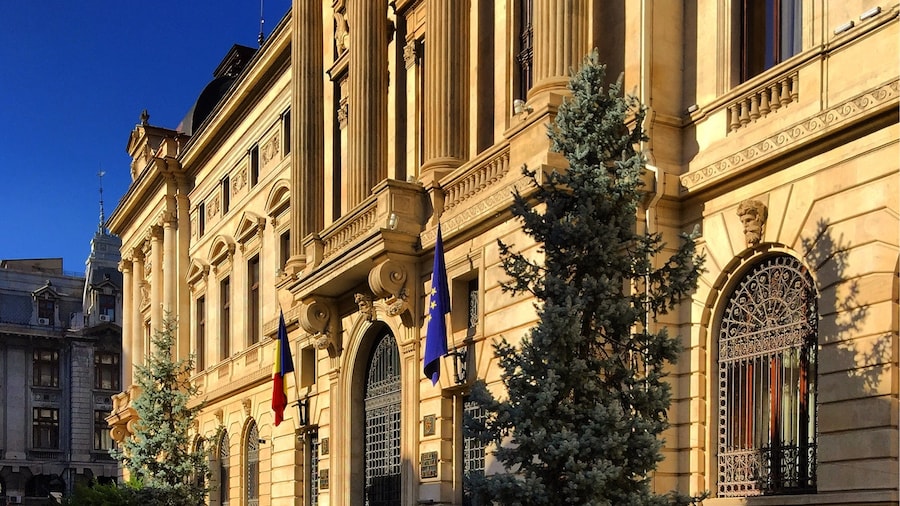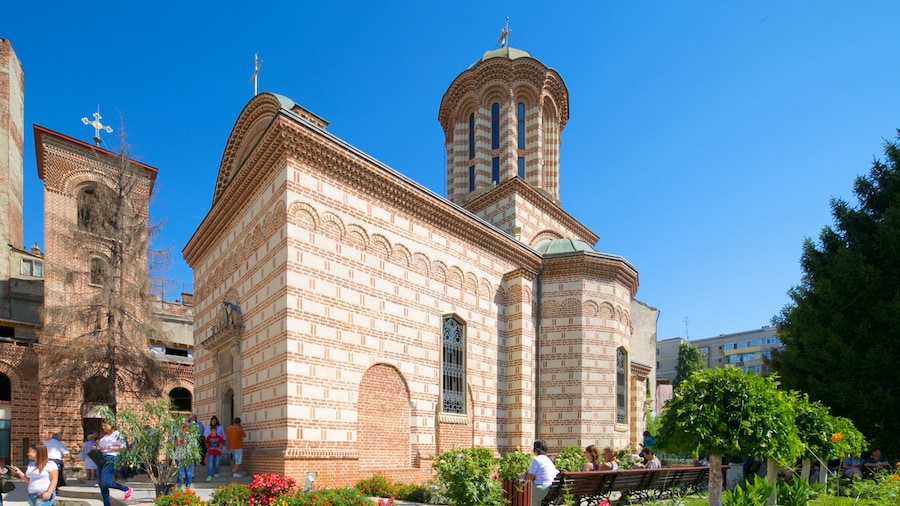Marvel at the Bronze Age statues and Romanian jewelry on display at this museum set inside a majestic neoclassical palace.
Delve into Romania’s medieval past at the National Museum of Romanian History. See statues excavated at an ancient cemetery, displays of opulent royal treasures and artifacts that showcase the country’s association with Rome. Much of the museum is undergoing renovation, although its most significant collections remain open.
The National Museum of Romanian History is housed in a majestic palace built at the end of the 1800s. Before becoming a museum, it was the headquarters of the Romanian postal service. Take a moment to admire the building’s imposing façade, characterized by its domes and Greek-style pillars. Greeting visitors at the main entrance is a curious statue of the Roman emperor Trajan, who stands naked and cradling a Dacian wolf.
Browse the interesting collection of Bronze Age statues in the Lapidarium exhibit. Archaeologists found them at a necropolis close to Cernavodă, a town established by the Ancient Greeks. Admire the full-size replica of Rome’s Trajan��’s Column, a monument that celebrates Emperor Trajan’s triumph over the Dacians. Note the intricately carved battle scenes and an inscription dedicating the column to the emperor from the people of Rome.
In the Romanian Treasury exhibit find riches from the Dacian era to the present day. See jewel-encrusted batons, crowns, daggers, goblets and necklaces. Look for the emeralds designed for Marie of Romania, the country’s last queen consort and the granddaughter of Queen Victoria of the United Kingdom.
Ask about temporary exhibitions. These range from painting and photography expositions to traveling international exhibits such as China’s Terracotta Army.
The National Museum of Romanian History is in Bucharest’s historic Lipscani neighborhood. Public buses stop nearby and the Piața Unirii 2 metro station is a 15-minute walk away. Combine your visit with a stroll around Lipscani, where bars, cafés and galleries line a network of meandering streets. Visit other major attractions, including Stavropoleos Church and the ruined royal court, Curtea Veche. The museum is open from Wednesday to Sunday and has an admission fee.
















